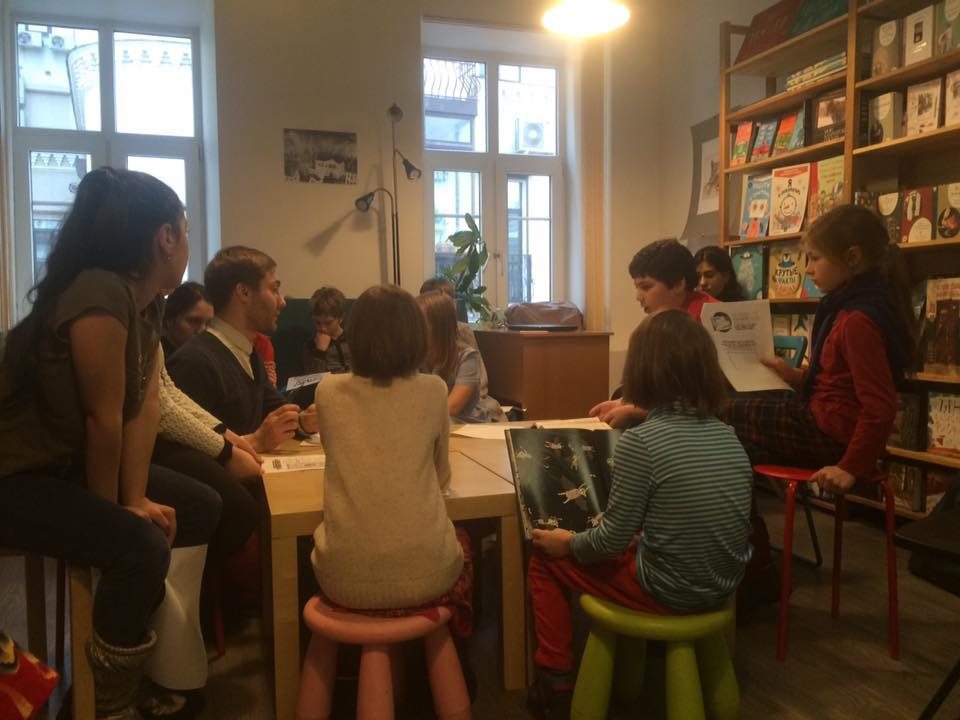
The methodology for workshops for A4k
WORKSHOPS WITH DIN A3 BOOK PAGES AND/OR “TABLECLOTHS”
Our methodology of preparing and conducting workshops consists of several steps:
1.- Materials: We prepare the learning materials to provide a framework for the participants to talk about a specific subject. Our materials are based on a project created by Nika Dubrovsky. We collaborate with contemporary artists, anthropologists, sociologists, social workers, academics and civil activists. The general approach is anthropological in the sense that we point on examples coming from the wide spectrum of different cultures in order to tackle the existential and universal question of what it means to be a human. Thus we present different worldviews throughout history and across different sociocultural environments. This is a demonstration of how essential notions are constructed dynamically, a proof that interpretation of such concepts as nation, family, beauty etc. is a changing process.
The learning materials include quotations, artworks by a curated group of artists, a collection of photos and they have a very special design that follows the principles of doodle books, interactive notebooks that inspire the participants to write and draw their own point of view (please find attached the layouts of the book pages and the introductions to several books).
2.- Workshop Procedure:
a. Learning materials are distributed.
b. Introduction to the topic(s). Different perspectives on the issue(s) through quotations, short text pieces, drawings and paintings.
c. After the introduction the work with and on the learning materials starts. Depending on the goals of the activity the DIN A3 book pages and/or the “tablecloths” (2×2 mts) are the point of departure for the creative engagement of the participants with the topic(s).
“Tablecloths” are another type of workshop materials which allows the participants equal access to the common space to be organized. For example, the “tablecloths” for the topic City invite the participants not only to invent their own house, street or playground but also to have a discussion with other participants on how to build a City together. What will be there on the central square? How many parks will there be in the City? How many shops? etc. (The same with other topics from the A4K-series like Migration, Climate and Nation)
Children and adults become co-authors of the book which leaves a lot of space for them to write comments and draw on the pages. Through modifying the learning materials individually and in groups, by the end of the workshop the participants find their own answer to the question „What is…” (“…a nation”, “a book”, “a family”, “a city”, etc.)
3. Workspace management:
Around the working place there will be panels on which part of the learning materials are exhibited as bigger posters. The A3 book pages can also be projected onto a screen. When working with the “tablecloths”, it is more convenient to put them on a big table and have all the participants sit round the table. The results of the workshop form an exhibition: the “tablecloths” and A3 book pages with comments drawn, painted and written on them by the participants become independent art pieces.
It is also possible to organize the exhibition at the venue where the workshop takes place (school, cultural centre, hospital, gallery, park). Furthermore, the results can be scanned and uploaded to the website of „Anthropology for Kids“(a4kids.org).
Through the exhibition of their work, the participants get a chance to see other people’s works, exchange ideas, come up with something new and, what is even more important, to gain the experience of creating their own version, to learn how to formulate their own opinion on the essential topics.